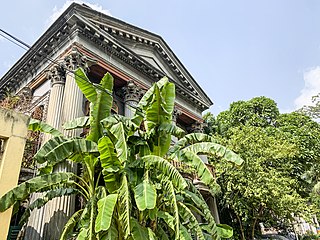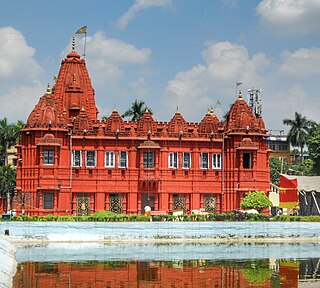
Job Charnock was an English administrator with the East India Company. He is commonly regarded as the founder of the city of Calcutta ; however, this view is challenged, and in 2003 the Calcutta High Court declared that he ought not to be regarded as the founder. There may have been inhabitants in the area since the first century CE. The High Court was right in claiming that villages that constituted colonial Calcutta were not established by Charnock or the British Raj itself, but Charnock’s ambition-driven doggedness toward setting up a East Indian Company frontier along the Eastern border of India that he could control on his own terms played a huge role in the creation of present day city of Calcutta.
Kolkata (Calcutta) was a colonial city. The British East India Company developed Calcutta as a city by establishing an artificial riverine port in the 18th century CE. Kolkata was the capital of the British India until 1911, when the capital was relocated to Delhi. Kolkata grew rapidly in the 19th century to become the second most important city of the British Empire after London and was declared as the financial (commercial) capital of the British India. This was accompanied by the development of a culture that fused Indian philosophies with European tradition.

Kolkata district is a district in the Indian state of West Bengal. It only contains the entire city proper of Kolkata, the capital city of the state and therefore it is a city district. It is the smallest district in the state and also the most densely populated district.

Khidirpur or Kidderpore is a neighbourhood of metropolitan Kolkata (Calcutta), in Kolkata district, West Bengal, India.

Kalikata was one of the three villages which were merged to form the city of Kolkata in India. The other two villages were Gobindapur and Sutanuti. Job Charnock, an administrator with the British East India Company is traditionally credited with the honour of founding the city. He settled in the village of Sutanuti.
Sutanuti was one of the three villages which were merged to form the city of Kolkata in India. The other two villages were Gobindapur and Kalikata.

Chitpur is a neighbourhood in North Kolkata in Kolkata district in the Indian state of West Bengal. Sometimes, the entire area along Chitpur Road is referred to as Chitpur, although the various localities have distinctive names.
There are several theories about the origin of Kolkata, erstwhile Calcutta in English, the name of the capital of the eastern Indian state of West Bengal.
Gobindram Mitter was one of the earliest Indian officials during the Company rule in India, who earned reputation for his wealth and extravagance.

Sarsuna is a neighborhood in South West Kolkata. It is a part of the greater Behala region and can be reached via Chowrasta or through Barisha. It is a predominantly Bengali neighborhood, though its fast becoming a cosmopolitan place. It is bordered by Barisha in the east and Maheshtala to the west.
Sabarna Roy Choudhury was a Zamindar family of Mughal Bengal. They controlled significant swathes of territory, including what would later become Kolkata, prior to the sale of zamindari rights in 1698 to the East India Company.

Kumortuli is a traditional potters' quarter in northern Kolkata, West Bengal, India. The city is renowned for its sculpting prowess. It not only manufactures clay idols for various festivals but also regularly exports them.

Dharmatala is a neighbourhood of Central Kolkata, in Kolkata district in the Indian state of West Bengal. Dharmatala Street has been renamed after Lenin as Lenin Sarani but the neighbourhood up to Wellington Square continues to be referred as Dharmatala. It is a busy commercial area that had come up with the growth of Calcutta during the British Raj and is thus one of the repositories of history in the city.

Shyampukur is a neighbourhood of North Kolkata, in Kolkata district in the Indian state of West Bengal. As a neighbourhood, it covers a small area but its importance is primarily because of the police station.

Jorabagan is a neighbourhood of North Kolkata, in Kolkata district, in the Indian state of West Bengal. As a neighbourhood, it covers a small area but its importance is primarily because of the police station.

Shobhabazar is a neighbourhood of North Kolkata, in Kolkata district, in the Indian state of West Bengal.

Betore was a major trading centre, the location being around present Shibpur in Howrah district in the Indian state of West Bengal.
Sett is a Bengali surname, derived from "Shreshthi" . Shreshthis were the oldest known businessmen in northern India. The name was changed to "Shethi" during the medieval period. After the arrival of the East India Company in India, the surname was anglicised to "Sheth" and later to "Sett".

Belgachia is an area of North Kolkata in Kolkata district in the Indian state of West Bengal.
Dihi Panchannagram was a group of 55 villages which the East India Company purchased in 1758 from Mir Jafar, after the fall of Siraj-ud-daulah, the last independent Nawab of Bengal, in what is now the city of Kolkata, earlier known as Calcutta, in Kolkata district, in the Indian state of West Bengal. These villages initially developed as suburbs of Kolkata, but now forms part of the city proper within the limits of the Kolkata Municipal Corporation.















